The year's highest science honor for high school students was awarded today to biochemistry research on cancer stem cells and an innovative use of gaming technology in the area of leg injuries and prosthetics in the 2011 Siemens Competition in Math, Science and Technology, America's premier science research competition for high school students.
Dec 5th, 2011
Read more
With a record number of 17 papers at the IEEE International Electron Device Meeting (IEDM) in Washington (December 5th-7th 2011), imec confirms its leading global position as R+D center solving key challenges of the International Technology Roadmap for Semiconductors (ITRS) and as technology and process provider for heterogeneous system integration.
Dec 5th, 2011
Read more
Prototypes developed for first time in real-world manufacturing environments are critical step towards transferring research into commercial devices.
Dec 5th, 2011
Read more
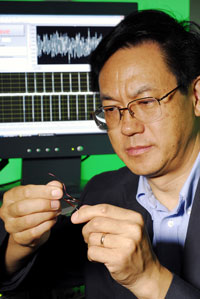 Wang received a 2011 Materials Research Society Medal Nov. 30th at the organization's fall meeting in Boston. The medal's commendation notes his "seminal contributions in the discovery, controlled synthesis, and fundamental understanding of zinc oxide nanowires and nanobelts, and the design and fabrication of novel, nanowire-based nanosensors, piezotronic devices and nanogenerators for energy harvesting."
Wang received a 2011 Materials Research Society Medal Nov. 30th at the organization's fall meeting in Boston. The medal's commendation notes his "seminal contributions in the discovery, controlled synthesis, and fundamental understanding of zinc oxide nanowires and nanobelts, and the design and fabrication of novel, nanowire-based nanosensors, piezotronic devices and nanogenerators for energy harvesting."
Dec 5th, 2011
Read more
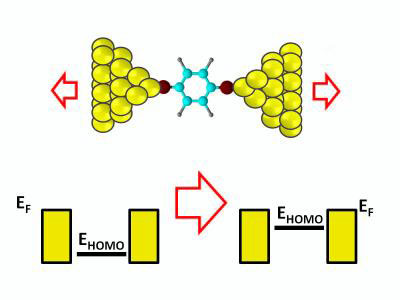 Unique properties inherent in single molecules may also allow clever designers to produce novel devices whose behavior falls outside the performance observed in conventional electronics.
Unique properties inherent in single molecules may also allow clever designers to produce novel devices whose behavior falls outside the performance observed in conventional electronics.
Dec 5th, 2011
Read more
Vortraege und Skripte der Tagung "Nanotechnologie und Wasserwirtschaft" vom 16.11.2011, organisiert von der Deutsche Vereinigung fuer Wasserwirtschaft, wurden von den Referenten zur Verfuegung gestellt und koennen auf der website der DWA abgerufen werden.
Dec 5th, 2011
Read more
Molybdenite, a new and very promising material, can surpass the physical limits of silicon. EPFL scientists have proven this by making the first molybdenite microchip, with smaller and more energy efficient transistors.
Dec 5th, 2011
Read more
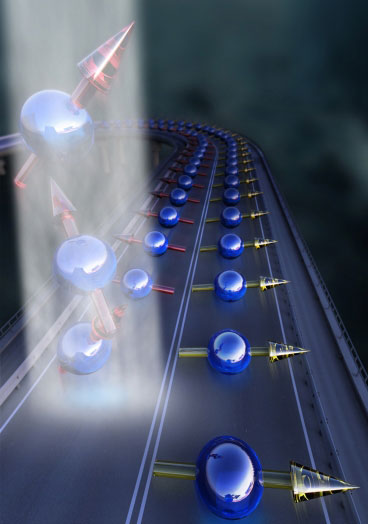 Researchers at MIT find a way to observe and control the way electrons spin on the surface of exotic new materials.
Researchers at MIT find a way to observe and control the way electrons spin on the surface of exotic new materials.
Dec 5th, 2011
Read more
Researchers have developed a technology for printing thermoelectric conversion devices onto flexible substrates such as plastic films and papers. The technology adds high flexibility to the thermoelectric conversion devices by turning them into film devices, allowing their installation to be unrestricted by the shapes of the objects onto which they are installed.
Dec 5th, 2011
Read more
 Using an atomic layer deposition process, researchers at Harvard University have developed a way to separate individual quantum dots within a single layer with an aluminum oxide insulating layer. The best metaphor is a carton of eggs, with the CdSe/ZnS QDs representing the eggs and the Al2O3 layer representing the cardboard spacers in between them.
Using an atomic layer deposition process, researchers at Harvard University have developed a way to separate individual quantum dots within a single layer with an aluminum oxide insulating layer. The best metaphor is a carton of eggs, with the CdSe/ZnS QDs representing the eggs and the Al2O3 layer representing the cardboard spacers in between them.
Dec 5th, 2011
Read more
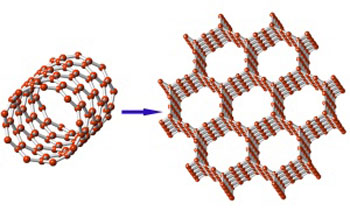 Carbon nanotubes are known for their remarkable mechanical and electrical properties - but can these properties be improved upon? Calculations have now shown that three-dimensional arrays of nanotubes could have strikingly enhanced mechanical and electronic properties.
Carbon nanotubes are known for their remarkable mechanical and electrical properties - but can these properties be improved upon? Calculations have now shown that three-dimensional arrays of nanotubes could have strikingly enhanced mechanical and electronic properties.
Dec 5th, 2011
Read more
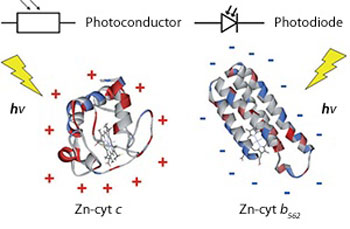 Similar proteins demonstrate different charge transport characteristics offering a route to biological electronic devices.
Similar proteins demonstrate different charge transport characteristics offering a route to biological electronic devices.
Dec 5th, 2011
Read more
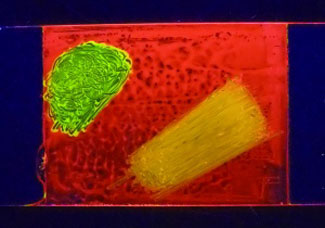 Researchers in Japan have developed a photoluminescent liquid-crystalline material that can switch between three colors in response to both mechanical and thermal stimuli.
Researchers in Japan have developed a photoluminescent liquid-crystalline material that can switch between three colors in response to both mechanical and thermal stimuli.
Dec 5th, 2011
Read more
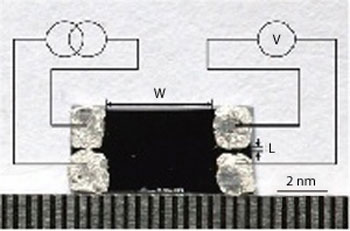 Magnetoresistance in silicon can be enhanced to match that of commercial devices by designing appropriate device geometries.
Magnetoresistance in silicon can be enhanced to match that of commercial devices by designing appropriate device geometries.
Dec 5th, 2011
Read more
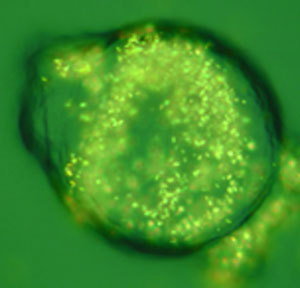 By changing the organic molecule that coats gold nanorods, scientists at Rice University in Houston have increased the number of gold nanorods inserted into a single, living cell to over 2 million. The previous record was 150,000. This achievement could greatly improve photothermal therapy for cancer, which uses near-IR light to heat nanorods inside cancer cells to destroy them.
By changing the organic molecule that coats gold nanorods, scientists at Rice University in Houston have increased the number of gold nanorods inserted into a single, living cell to over 2 million. The previous record was 150,000. This achievement could greatly improve photothermal therapy for cancer, which uses near-IR light to heat nanorods inside cancer cells to destroy them.
Dec 5th, 2011
Read more
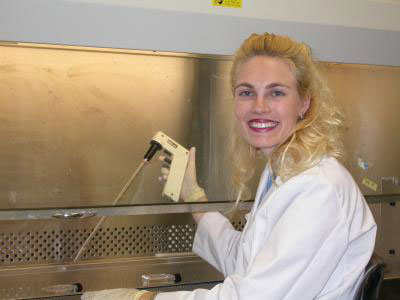 Biomedical engineer Marissa Nichole Rylander, associate professor jointly appointed in the mechanical engineering department and Virginia Tech - Wake Forest University School of Biomedical Engineering and Sciences, at Virginia Tech is the recipient of the 2012 Y.C. Fung Young Investigator Award.
Biomedical engineer Marissa Nichole Rylander, associate professor jointly appointed in the mechanical engineering department and Virginia Tech - Wake Forest University School of Biomedical Engineering and Sciences, at Virginia Tech is the recipient of the 2012 Y.C. Fung Young Investigator Award.
Dec 5th, 2011
Read more











 Subscribe to our Nanotechnology News feed
Subscribe to our Nanotechnology News feed